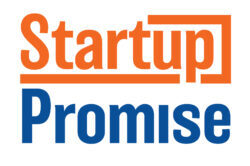In this post we will be addressing how to protect your business name and whether filing for a DBA, registering a trademark or copyright, creating a URL, filing a patent application, and registering your business in your state of operation is appropriate, and most importantly why.
Understanding the differences between the various methods used to protect your intellectual property allows you to be prepared to make the best decisions possible for your new business. By doing so, the fence around your valuable business will be strengthened!
There are several ways a business owner may protect the intellectual property you create as you start and grow a business. This is vitally important if you intend to grow a valuable business.

Do you have a question? Ask at the bottom of this post.
One of our advisors will answer!
Several key concepts will be discussed to help you to see the big picture and they include:
- What is a DBA, when it should be filed and what it is not!
- What does a Business Registration do for your business and when is it necessary.
- What is a URL and what protections does its creation offer a business owner.
- What are Trademarks, how you claim one and when should you register one.
- What is a Copyright and how to claim and affix a notification.
- What is a Patent and what protections does its award offer a business owner.
Intellectual Property Overview
The Intellectual Property – DBAs, Trademarks & Other Tools Overview is a color-coded spreadsheet intended to help you follow along and keep the concepts you’re learning organized.
Take a look at the available reference material available for download, called the Intellectual Property Overview – DBAs, Trademarks and Other Tools. Download our series of charts and tools covering this and other business entity topics here to make it easier to learn.
The Intellectual Property Overview covers all of the various types of intellectual property protection available to a business owner.
Intellectual Property Protection
 I’ll be walking through this overview to help you understand the various ways to protect your business name and other forms of business intellectual property as you start your business and as you grow your business.
I’ll be walking through this overview to help you understand the various ways to protect your business name and other forms of business intellectual property as you start your business and as you grow your business.
It’s very important to keep in mind that all of these Intellectual Property filings may be necessary beyond the startup phase of your business!
As I stated in prior posts, we are trying to build strong fences around your personal assets and income. Understanding how to protect the intellectual property you’ve created is vitally important. And in certain cases, if your new business violates another’s intellectual property, you may find yourself defending an infringement claim. Knowing how to prevent this from happening is very important.
I will be defining the various types of IP protection available, describing its form of mark or notification, describing what type of protection is offered and what it is not. And last but not least, we cover how to go about filing for or obtaining each type of IP protection.
DBAs (or Fictitious Name Certificates)
One of the most popular questions I receive week after week is about DBAs. Unfortunately there seems to be a lot of confusion about this subject. Many small business owners believe a DBA is actually a separate business entity. It is not!
In fact, a DBA is merely an application made to the state in which you operate your business for permission to utilize a different name than the name your business legally registered for and obtained. Think of a DBA certificate as a permission slip granted by the state for to you call your business (or a line of your existing business) a different name.
It is important to understand that a DBA is not a separate business entity. And more importantly, it does not offer the small business owner any liability protection whatsoever! A DBA really is the acronym for “doing business as” and it represents a fictitious name certificate for you (if you are a sole proprietorship) or your business entity.
There are many reasons why a business owner may choose to file for a DBA or fictitious name certificate after here they have started a business. Many times they simply don’t like the original name chosen when they created their business or it simply doesn’t describe the image for marketing purposes which the business owner desires. The notification to other parties if a fictitious name certificate has been awarded is simply the acronym DBA or the three letters separated by a slash: D/B/A.
Many business owners also believe if they add multiple businesses to their original business that they should file a DBA certificates for each new business. While this may be necessary and desirable, it’s very important to understand that there is no legal separation of liability between each of these businesses with separate DBA certificates! Should something goes wrong with one of the operations representing itself under a fictitious name (or DBA) which is held under a single business entity, all lines of business may be in jeopardy!
This is an important point, so let’s walk through an example:
DBA Example
Jonathan start a restaurant business called Jonathan’s Barbecue, Inc. We’ll keep it simple and assume that he doesn’t own the building or property. Instead, he is simply renting space. After operating for several years, many of his customers suggests he begin to do catering. He hires a marketing company who designs a new logo for his catering business. Jonathan is up and running, however the name differs from his restaurant Jonathan Barbecue, Inc. Jonathan chooses to file for DBA for the new line of business “Jonathan’s Catering”. Sorry, his marketing company was not very creative!
In this case, if at some point in the future a terrible accident occurs while delivering the catering services under the Jonathan Catering line of business, all of the assets owned by Jonathan’s Barbecue, Inc., as well as its income, would be in jeopardy. And the reason for this is the DBA “Jonathan’s Catering” is merely another asset owned by Jonathan’s Barbecue, Inc.
If Jonathan wanted to separate the liabilities (the risks) in the two lines of business (his Barbecue, Inc. restaurant and catering), he should consider forming another business entity for the catering business.
A fictitious name certificate for a DBA is applied for in the state in which your business entity is formed.
Business Name Registration
While we are on the general topic of what to name your business, this is a good time to cover a subject which many business owners (startups and veterans alike) may find eye opening. That subject is the state’s requirements to file for your business name registration.
When a business owner starts their business and chooses to form an entity, registering a business name occurs alongside the formation of the business entity in most states. The business entity formation papers are filed in one office and then in a separate filing it is also necessary to register the business name and operation. This business name registration permits the business owner to do business under a given name and it is granted by the state in which you or your business is operating. It is also necessary if your business has a sales presence and or have hired employees inside a given state.

That’s worth repeating. If you have established business operations by opening an office or have a sales presence by sending sales representatives into a territory or have employees working inside a state, you have established a connection with another state and should register your business name in that state! This means many business owners need to form their business and register in one state AND also register their business name in several other states as well!
Registering a business name in a given state merely notifies the state that your business has established nexis (a connection) with it for various purposes. Registering does not offer your business any protections or rights.
Each state is different and the tax laws differ widely. Your business may need to collect and/or pay certain state and local taxes, comply with certain laws, and prepare reports about its operations and employees.
In the early stages of your business, the requirements to register your business in multiple states where nexis is established may not seem like a big deal. That said, keep this important requirement in mind as your business grows in the future beyond your state’s borders.
URLs
A URL is your business’ Internet website address and of all of the intellectual property tools how to acquire one is most commonly understood. Accordingly, so we won’t spend too much time on this subject.
That said, many business owners mistakenly believe that if they’ve secured a URL through one of the Internet sources, they’ve obtained intellectual property rights to the name, have registered the business name and are able to begin doing business. This is not the case!
A URL gives you an address on the world wide web. And that’s all.
A URL is NOT a trademark, service mark, copyright, patent or a business name registration!
When starting a business, it’s a great idea to ‘google’ the name you’re contemplating. It’s really the poor man’s search tool and can easily let you know if another party has already claimed the URL web address. If they have and the company appears to be in operation, it’s best to move on and find another trade name for your new business.
Once a suitable name is found to be available for use on the world wide web, then it’s best practice to conduct a trademark search if your intent is to secure intellectual property rights in the trade name on a national basis.
This is a great transition to our next topic of trademarks. Because if you understand the importance of protecting your trade name by taking the proper steps when you start your business, then you will likely avoid a messy consequence of defending a trademark infringement claim later!
Trademarks & Service Marks
Okay, Let’s start by first by defining trademarks and service marks.
Your brand represents the goodwill you will build up (or already have) in your business. When your clients or customers think of your business, they may recall an image, logo, symbol or other unique design. It may even be your tagline or slogan. All of these become forms of your business’ intellectual capital and are very important and valuable to your business. And to protect them from other’s improper use or infringement, it’s a really good idea to register your intellectual property claim to them.
Trademark vs. Service Mark
Before we get too deep into the specifics on this topic, let’s touch base on one matter and that’s the distinction between a trademark and a service mark.
A trademark is used when the mark or logo is related to the sale of goods whereas a service mark is related to the sale of services. For all intents and purposes, when I refer to a trademark, the same will hold true for a service mark.
Registering a Trademark
There are two forms of trademark registrations. The first one is known as the poor man’s trademark registration. It is the practice of adding “TM” for trademark or “SM” for service mark to a combination of words, symbols, logos other unique designs when such a mark is first put into use. Recording the date in which this has been done is necessary.
The second way of registering a trademark is by officially filing in the US Patent and Trademark Office your claim to the mark’s creation and use. Once it’s approved by the USPTO, the official registration is noted with a circle surrounding the capital letter “R”: ®
There are many reasons for filing in the USPTO, not the least of which is to ensure your right to use the trademark in all 50 states and to give notice regarding the entity or person who owns the trademark.
Your federally registered trademark would also be added to the database at the USPTO and registered with U.S. Customs to help prevent fraudulent products from being imported into the United States and infringing on your trademark. Federal registration also provides you with certain legal rights to take actions against others who are infringing on your trademarked intellectual property. For most business owners, being able to mark their logos, taglines, designs, etc. with a registered trademark is appealing and the reason many make application a priority.
Trademarks, whether registered in the USPTO or in the form of the poor man’s registered trademark, does not provided its’ owner with protection outside of the United States. So, keep that in mind.
Caution!
 Trademark infringement cases are common and it’s not unusual for a small business owner to finding themselves receiving a “cease and desist letter” from an attorney representing another business owner. Receiving such a letter is frightening and can be very costly.
Trademark infringement cases are common and it’s not unusual for a small business owner to finding themselves receiving a “cease and desist letter” from an attorney representing another business owner. Receiving such a letter is frightening and can be very costly.
To resolve such a trademark infringement claim, it may involve making a monetary payment for damages, needing to destroy product and marketing materials and/or having to start from scratch building your business brand all over again. For these reasons, conducting a search of the US Patent and Trademark Office for your intended trade name and logo before you begin to use it, is very wise.
Copyrights
Now let’s talk about copyrights. A copyright protects original works of authorship. In simple terms, when an original work is created by you or your business by affixing a copyright notice tells the world its content belongs to you or your business and it should not be copied, duplicated or used without your permission.
To properly mark the copyright notification, use the capital letter “C” with a circle around it, followed by the year of the works first publication, and then followed by the name of its owner. An example would look like this: “© 2024 Your Company Name, LLC”.
As you build your business be mindful of the many original works your business creates and properly notify its readers with a copyright notice. Doing so, and actively monitoring potential infringement, will provide much benefit and value to your business in the long run.
A copyright does not protect facts, ideas, systems and methodologies. Instead a copyright does protect original works and notifies others of the creator’s right of ownership in his or her works.
A copyright does not necessarily need to be registered if the proper copyright notice on the original work is properly affixed.
Patents
We will briefly discuss patents, as the complexity of this subject is beyond the scope of this article. Nevertheless, it’s important to understand the benefits a patent does offer a business owner which is to protect their intellectual property rights in an invention or discovery. If a patent is approved by the USPTO, it will be issued an eight character patent number.
A patent grants its owner the right to exclude others from making, using, offering for sale or selling the invention or discovery in the United States or importing the invention into the United States for a period of time.
A patent does not automatically protect its owner from others who may infringe on the patent owner’s rights from making, using, offering for sale, selling their invention. Instead, the owner of a patent must enforce its patent rights.
While the USPTO handles patent applications, I must stress this is not a do it yourself project! The patent application process and maintenance is complex, to say the least! You may learn more about the application and maintenance process at www.uspto.gov/patent. I highly recommend that you hire an experienced patent attorney if you have an invention or discovery you feel should be protected with a patent.
- Startup vs Acquisition – Which is Best? - August 21, 2023
- How to Get Money to Start a Business - August 7, 2023
- How to Raise Capital to Start a Business - February 17, 2023


0 Q&A